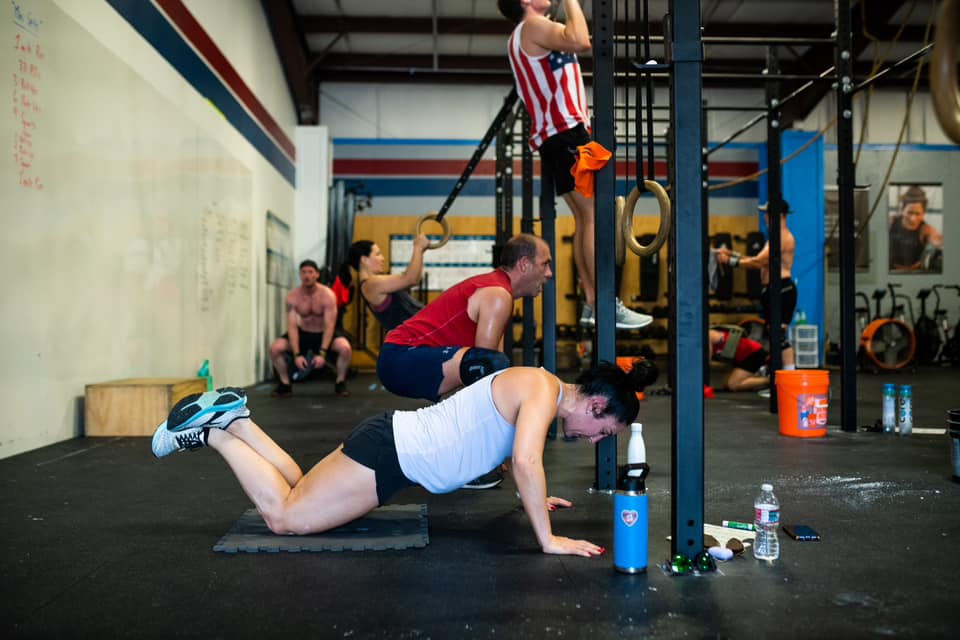Lower back pain is a common complaint, impacting countless individuals. It can range from mild discomfort to debilitating agony, often hindering daily activities. Many find relief in targeted exercises, but choosing the right ones and performing them correctly is crucial. This post provides a structured guide to safe and effective lower back dumbbell exercises designed to strengthen the back muscles, alleviate pain, and improve posture. This outline is perfect for beginners, those with mild lower back pain, or anyone seeking to enhance their overall back health.
This guide is specifically designed for individuals who are new to exercise or have recently experienced lower back pain. While it offers progressive exercises suitable for various fitness levels, it’s crucial to approach these exercises cautiously, as they require proper form and controlled movement to avoid further injury or exacerbate existing pain. Before starting any new workout routine, especially if you have a history of lower back pain, consult with a healthcare professional like a physical therapist or doctor. They can assess your individual needs and ensure the exercises are appropriate for your specific situation.
Lower Back Anatomy & Function
The lower back isn’t just one muscle; it’s a complex network of interconnected muscles working together to support the spine and maintain proper posture. Key players include the erector spinae (running along the spine, extending and straightening the back), multifidus (deep muscles crucial for stabilizing the spine), and gluteal muscles (especially the glutes, which contribute significantly to core stability and proper spinal posture).
Posture plays a vital role in lower back health. Poor posture often leads to muscle imbalances, putting excessive strain on the lower back and increasing the risk of pain. Maintaining a neutral spine, where your natural curves are maintained, is paramount during exercises. A neutral spine allows for optimal engagement of the core and back muscles, preventing unnecessary stress and promoting long-term back health.
Lower back pain can stem from various sources. Muscle imbalances, where some muscles are overused while others are underused, are a common culprit. Poor posture habits, repetitive strain from daily activities, and spinal issues (such as disc problems or stenosis) can also contribute.
Dumbbell Exercises for Lower Back
A. Back Extension & Strengthening
Bent-Over Dumbbell Rows
Bent-over dumbbell rows are excellent for strengthening the muscles along your spine and improving posture. Focus on maintaining a straight back and engaging your core throughout the movement. This exercise directly targets the erector spinae, rhomboids, and latissimus dorsi, contributing to a stronger and more stable lower back. Variations include using different bench heights, and unilateral variations. You can progressively increase the weight as you feel more comfortable and your strength increases.
Correct Form: Begin with a neutral spine and keep your core engaged. Retract your shoulder blades before starting the row and pull the dumbbell toward your torso, keeping your elbow close to your body. Return the weight slowly and controlled to the starting position.
Modifications/Progression: Modify by using a bench or incline for support for beginners. For increased challenge, attempt unilateral variations (doing one side at a time). Using lighter weights is a good start, and gradually increasing the weight as strength increases will progress the exercise.
Common Mistakes and How to Avoid Them: Common mistakes include rounding the back or using momentum instead of controlled movement. To avoid this, maintain a neutral spine throughout the movement. Focus on the contraction of the back muscles, particularly the shoulder blades.
Dumbbell Deadlifts
Dumbbell deadlifts are a compound exercise that engages multiple muscle groups in your posterior chain, which is crucial for overall back strength. By using dumbbells, you improve core stability and lower back strength. It’s important to maintain a neutral spine through the entire movement. Variations in stance width allow for adjustments based on individual needs and comfort levels.
Correct Form: Initiate the lift by hinging at your hips, keeping your back straight. Maintain a neutral spine throughout the movement. Gradual controlled movement is key.
Modifications/Progression: Begin with a narrower stance for better stability. You can progress to wider stances as strength increases. Gradually increase the weight as your strength improves.
Common Mistakes and How to Avoid Them: One common mistake is rounding the back. Maintain a neutral spine. Another is using momentum. Control the weight and avoid jerky movements. Focus on the hinge movement at the hips and the controlled movement.
B. Lateral & Upper Back Strengthening
Dumbbell Pullovers
Dumbbell pullovers primarily target the latissimus dorsi, but also engage the posterior deltoids. This exercise enhances upper back strength and stability. Using different bench angles allows for targeting different muscle fibers. Experimenting with weights allows for progression as strength improves.
- Correct Form: Lie on a bench, hold the dumbbell with both hands, and lower it behind your head in a controlled movement while squeezing your lats. Bring the weight back to the starting position.
- Modifications: Using a decline bench will target different muscles. Variations may involve using lighter weights or different dumbbell sizes to adapt to individual strengths.
- Common Mistakes and How to Avoid Them: Arching your back or using momentum is a mistake. Instead, keep your back pressed against the bench throughout the movement.
Seated Rear Delt Raises
Seated rear delt raises are excellent for strengthening the rhomboids and rear deltoids. The controlled movement is key to preventing injury. Using varying bench angles or dumbbell weights provides for personalized progression.
- Correct Form: Maintain a neutral spine throughout the movement. Squeeze your shoulder blades together as you lift the dumbbells, focusing on the rhomboids. Control the descent.
- Modifications: Using different bench angles or weights can adjust the exercise. Different variations may suit different needs or pain levels.
- Common Mistakes and How to Avoid Them: Common mistakes include rounding the back or raising the dumbbells too high, which can put stress on the shoulders. Maintain a neutral spine and controlled movement.
Shrugs with Shoulder Retraction
Shrugs with shoulder retraction are valuable for targeting the trapezius muscles, which aid in posture and stabilization. Varying weights allows for progression. Practice the shoulder retraction to further strengthen your upper back.
- Correct Form: Start by retracting your shoulder blades together. Shrug your shoulders up towards your ears and maintain the squeeze in your shoulder blades during the upward portion. Slowly lower the dumbbells back down, focusing on control.
- Modifications/Progression: Use a lighter weight to master proper form. Gradually increasing the weight as strength develops is important.
- Common Mistakes and How to Avoid Them: Common mistakes include using momentum to lift the dumbbells or shrugging your shoulders too high. Maintain a slow and controlled movement.
C. Full Body Compound Exercises
Renegade Rows
Renegade rows work several muscles simultaneously, building core strength, back strength, and shoulder strength. The progressive nature of this exercise allows for improvement. A variation of this exercise includes dropping to your knees for improved comfort and reduced impact on the lower back.
Correct Form: Start in a plank position with hands on dumbbells. Row one dumbbell up towards your torso, maintaining core engagement, and then return to the starting position. Repeat with the other side. Variations include reducing the range of motion by using shorter row movements.
Modifications: Reduce the intensity by dropping to your knees to lessen the impact on your lower back.
Common Mistakes and How to Avoid Them: Common mistakes include arching or rounding your back. Maintain a straight line from your head to your heels while engaging your core.
Progression and Safety
Gradual Weight Increase
Increase the weight gradually to avoid straining or overexerting your lower back. Allow yourself to progress in a slow and controlled way. Listen to your body and increase the weight only when you feel comfortable and you can maintain good form.
Proper Warm-up
A thorough warm-up is crucial before engaging in any lower back exercises. This warms up the muscles and prepares them for the workout ahead. This helps prevent injury by increasing blood flow to the muscles.
Cool-down and Stretching
After your workout, cool down and stretch your lower back muscles. Stretching improves flexibility and blood flow. This will aid in recovery.
Listen to Your Body
Pay attention to any pain or discomfort during the exercises. If you experience pain, stop the exercise immediately and consult a healthcare professional. Listen to your body’s cues to prevent injuries.
Spotter or Support
When performing more challenging exercises like dumbbell deadlifts, consider having a spotter for safety and proper form. A spotter can help you adjust your form or provide assistance if needed.
Combining with Other Strategies
Core Strengthening
Incorporate core-strengthening exercises into your routine, such as planks and crunches, to improve overall core strength and stability. These will help to prevent future injuries and help maintain good posture.
Stretching
Regular stretching routines that target the lower back and surrounding muscles can help maintain flexibility and reduce muscle tension. This helps promote blood circulation and prevent muscle stiffness.
Posture Correction
Pay attention to your posture throughout the day, both during work and leisure activities. Good posture habits outside of exercise will complement your lower back strengthening routine. This aids in maintaining long-term lower back health and preventing pain.
Dumbbell Workout To Strengthen Weak Lower Back Muscles At Home
Conclusion
By following this guide to lower back dumbbell exercises, you can build strength and stability in your lower back. Regular exercise, combined with proper form and gradual progression, can help reduce lower back pain and improve overall posture.
Consistency and a focus on proper form are key to achieving positive results.
Remember to prioritize safety and listen to your body.
If you want to join CrossFit Gym in League City, contact us!
Further Resources
Harvard Health – Common Causes of Back Pain
Healthline – Lower Back Pain








